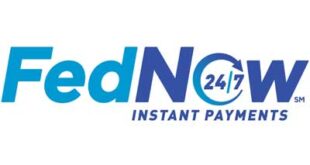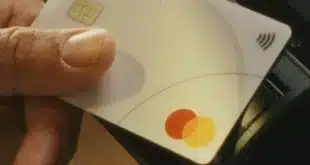Contactless payments got a big boost Wednesday when the New York City area’s Metropolitan Transportation Authority approved a $539.5 million contract with San Diego-based Cubic Transportation Systems to install a near-field communication-based payment system across all MTA transit and commuter-rail systems that includes open-loop payments.
The deal means MTA riders will be able to pay for fares at the turnstile and on buses with a mobile wallet such as Apple Pay, Android Pay, or Samsung Pay, a contactless general-purpose debit or credit card, or a new MTA fare card that uses NFC instead of the 1990s-era magnetic-stripe MetroCard.
Riders will be able to purchase contactless MTA fare cards that can be loaded with value using the MTA’s mobile app, online, via ticket machines, and ticket windows. Equipment purchased by the MTA from Cubic will include fare validators and ticket vending machines in 472 subway stations and 6,000 buses, Cubic says.
In addition, riders using the Long Island Rail Road and Metro-North Railroad will able to merge their subway, bus, and rail tickets into a single payment form factor.
The deal also includes an option for the MTA to contract with Cubic for another $33.9 million in services, such as sales of fare media at local retailers and the purchase of additional fare-validation and vending equipment.
“The move to a truly 21st Century method of payment represents a critical step in our overall efforts at modernizing the subway system and improving service for all our customers,” MTA Chairman Joseph Lhota said in a news release. “The subway, bus and commuter-rail network is the lifeblood of our regional economy, and major upgrades like this help make the system more convenient and efficient for the millions of New Yorkers who use it every day.”
London’s public transit system, Transport for London, and Mastercard Inc. will be partners in the deal. Cubic Corp., the parent of Cubic Transportation Systems, last year struck a deal with TfL to license its contactless ticketing technology. Mastercard’s exact role was not spelled out, and a Mastercard spokesperson was unavailable Thursday morning.
Between 5.8 to 6 million people ride the New York City subway, and more than 2 million people ride the city’s buses daily.
The MTA expects to roll out the new fare system in phases over a more than five-year period. By mid-2019, the MTA projects 500 subway turnstiles and 600 buses will have been upgraded to accept the new technology.
Consumers will be able to continue using the mag-stripe MetroCard, which debuted in 1994, until the new system is 100% operational, which the MTA projects will be 2023. The new system will encrypt data that can only be decoded using an authorized device.
Officials expect the new system to reduce the MTA’s operating costs because NFC readers are less prone to malfunctions than the existing MetroCard readers. In addition, the new system will reduce the rising cost of maintaining the aging fare system, Cubic says. Each MetroCard transaction currently costs the MTA about 15 cents. Cubic expects the per-transaction cost to fall with the new fare system, but did not provide a number.
Additionally, the new system is expected to help increase rider throughput at the turnstile and on buses.
Many transit agencies have been adding mobile tickets for smart phones in recent years. Few consumers, however, pay fares with general-purpose contactless debit or credit cards because few such cards have been issued in the United States. Still, moving to an open-fare system will provide the MTA with greater flexibility in adding new features down the road, says Peter Quadagno, president and chief executive of Quadagno & Associates Inc., a West Chester, Pa.-based payments consultancy.
“With a closed system, when the MTA wanted to make any kind of change, such as a fare increase, it had to go to through vendor to do so,” says Quadagno. “With an open system, changes can be made more easily, and the cost of the hardware and software is considerably less because it is off-the-shelf technology.”
Besides increasing operating efficiencies for the MTA, consumers will benefit by being able to view their ride history, check account balances, and report lost or stolen cards online or through their smart phone, according to Cubic and the MTA. A customer-service center for the MTA’s new fare system will be located in Buffalo, N.Y.





